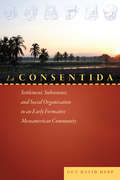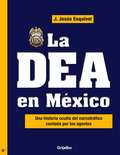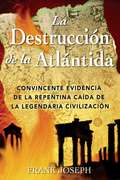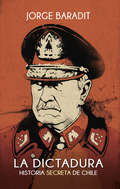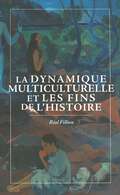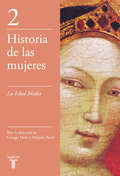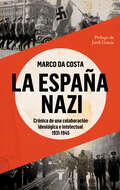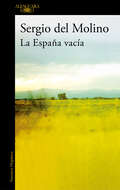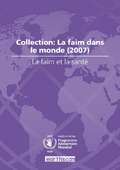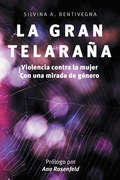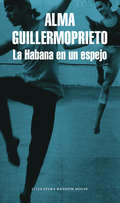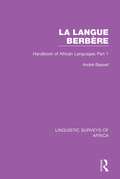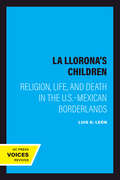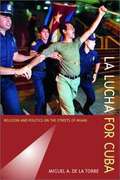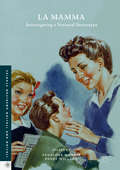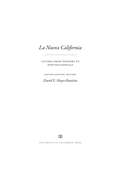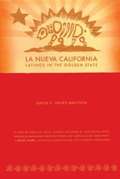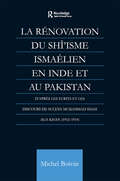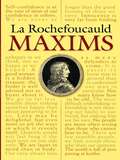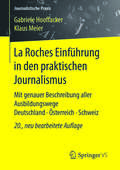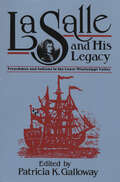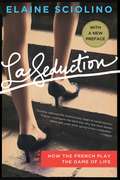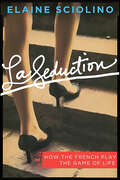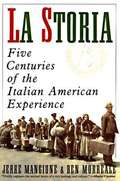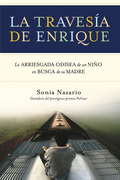- Table View
- List View
La Consentida: Settlement, Subsistence, and Social Organization in an Early Formative Mesoamerican Community
by Guy David HeppLa Consentida explores Early Formative period transitions in residential mobility, subsistence, and social organization at the site of La Consentida in coastal Oaxaca, Mexico. Examining how this site transformed during one of the most fundamental moments of socioeconomic change in the ancient Americas, the book provides a new way of thinking about the social dynamics of Mesoamerican communities of the period. Guy David Hepp summarizes the results of several seasons of fieldwork and laboratory analysis under the aegis of the La Consentida Archaeological Project, drawing on various forms of evidence—ground stone tools, earthen architecture, faunal remains, human dental pathologies, isotopic indicators, ceramics, and more— to reveal how transitions in settlement, subsistence, and social organization at La Consentida were intimately linked. While Mesoamerica is too diverse for research at a single site to lay to rest ongoing debates about the Early Formative period, evidence from La Consentida should inform those debates because of the site’s unique ecological setting, its relative lack of disturbance by later occupations, and because it represents the only well-documented Early Formative period village in a 300-mile stretch of Mexico’s Pacific coast. One of the only studies to closely document multiple lines of evidence of the transition toward a sedentary, agricultural society at an individual settlement in Mesoamerica, La Consentida is a key resource for understanding the transition to settled life and social complexity in Mesoamerican societies.
La DEA en México: Una historia oculta del narcotráfico contada por los agentes
by J. Jesús EsquivelEl combate al narcotráfico en México desde el punto de vista de los agentes de la Agencia Antidrogas de Estados Unidos, con los testimonios de varios de ellos que han trabajado en nuestro país en diversos momentos. Un libro revelador e impactante que detalla por primera vez la forma en que la DEA ha intervenido en México desde su creación en 1973, y cómo lo sigue haciendo y lo hará en el futuro porque llegó para no irse nunca. Hasta hoy no se había escrito una investigación como ésta. Se sospechaba que la DEA operaba en el territorio nacional con entera libertad, pero se carecía de evidencias como las que aquí presenta J. Jesús Esquivel -corresponsal en Washington del semanario Proceso- a través de los testimonios directos de agentes antinarcóticos. Ellos nos cuentan cómo operan, cuáles son sus métodos de investigación, cómo se allegan informantes y cuál es la relación que establecen con las autoridades, las fuerzas armadas y las policías nacionales, así como con narcotraficantes y otras agencias norteamericanas. Entre otras valiosas revelaciones, La DEA en México documenta cómo los agentes estadounidenses recorren el país ilegalmente armados, algo que el gobierno mexicano ha ocultado, al mismo tiempo que contiene referencias abiertas y directas sobre la corrupción imperante entre todos los involucrados nacionales en el combate a las drogas. Por añadidura, se da a conocer un documento interno de la DEA que describe paso a paso la investigación que en 2005 condujo al descubrimiento de narcofosas en Ciudad Juárez, donde sale a la luz cómo el Departamento de Justicia de Estados Unidos protegió a un informante que perpetró un asesinato mientras colaboraba con esa misma dependencia. Finalmente, siempre desde la óptica de los agentes extranjeros, se reconstruye la lucha contra las drogas desde los años setenta y se relata la historia de los principales capos, como Amado Carrillo Fuentes, Juan García Ábrego y, por supuesto, El Chapo Guzmán, a quien "no se atrapa porque el gobierno mexicano no quiere hacerlo", según sostienen los entrevistados.
La Destrucción de la Atlántida: Convincente evidencia de la repentina caída de la legendaria civilización
by Frank JosephTodas culturas indígenas comparten el mito de un antiguo diluvio. En su libro La Destrucción de la Atlántida, autor Frank Joseph enlaza este fenómeno mundial con la historia de la civilización perdida de la Atlántida. Este cuento extenso com-bina 20 años de investigación con una imaginativa y pasmosa representación de un gran imperio corrompido por una gran codicia por la riqueza y el poder, ofreciendo una lección importante para nuestra civilización materialista.
La Dictadura: Historia secreta de Chile
by Jorge BaraditUna crónica sobre la vida política y social en Chile durante la dictadura militar y sus repercusiones vigentes. ¿Cuál fue el origen de la división política que llevó al golpe de Estado de 1973? ¿Cuándo y de qué manera se gestó el bombardeo a La Moneda? ¿Cuál fue la agenda oculta para refundar Chile durante la dictadura de Pinochet? ¿Cuáles fueron las operaciones del régimen militar y de la resistencia que marcaron los destinos del país? Con su distinguible estilo narrativo y el aura de Historia secreta de Chile, Baradit responde estas preguntas y retrata no solo los secretos y la ferocidad del régimen, sino también la intimidad del hogar chileno durante los años más dramáticos de nuestra historia reciente, desde 1970 hasta la muerte de Pinochet en 2006. La dictadura es un libro ágil, pertinente e inolvidable para dilucidar un pasado aún oscuro y, asimismo, los traumas y frustraciones del país actual.
La Dynamique multiculturelle et les fins de l’histoire (Philosophica)
by Réal FillionDans La dynamique multiculturelle et les fins de l'histoire, Réal Fillion propose une lecture originale de textes clés portant sur la philosophie de l'histoire signés par Kant, Hegel et Marx, et démontre que ces textes demeurent pertinents aujourd'hui pour comprendre l'histoire. Il présente les thèses de ces trois auteurs à propos de la dynamique et des fins de l'histoire afin de répondre à la question suivante : où allons-nous? Appuyant sa réponse sur le double constat que le monde devient de plus en plus multiculturel et de plus en plus unifié, Fillion réaffirme la tâche de la philosophie spéculative de l'histoire telle que l'avait comprise la philosophie allemande : il s'agit de comprendre et d'expliciter le processus historique en tant que tout en évolution. De sa compréhension de la dynamique du passé et du présent telle que présentée par Kant, Hegel et Marx, l'auteur considère plusieurs courants récents de la pensée sociale et politique afin de jeter un éclairage différent sur les événements actuels et les avenirs possibles. Il présente ainsi une réponse à la fois riche et actuelle à la question : où le monde actuel s'en va-t-il ? Publié en français
La Edad Media: La Edad Media (Historia de las mujeres #Volumen 2)
by Georges DubyEsta obra busca analizar cómo las relaciones de los sexos condicionan la evolución de las sociedades y la necesidad de que las mujeres encuentren, al fin, su espacio propio. Esta Historia de las mujeres responde a la necesidad de ceder la palabra a las mujeres. Alejadas, desde la Antigüedad, del escenario donde se enfrentan a los dueños del destino, reconstruir su historia significa describir su lento acceso a los medios de expresión y su conversión en persona que asume un papel protagonista. Este análisis implica, asimismo, que las relaciones entre los sexos condicionan los acontecimientos, o la evolución de las sociedades. No se buscan conclusiones tajantes sino que las mujeres encuentren, al fin, su espacio propio. Tomando la periodización habitual y el espacio del mundo occidental, esta obra se divide en cinco volúmenes independientes pero complementarios. Este segundo volumen aborda el cambio que para la mujer y su imagen supone la consolidación del cristianismo.
La España nazi: Crónica de una colaboración ideológica e intelectual, 1931-1945
by Marco da CostaLa desconocida historia del respaldo al nazismo de los sectores intelectuales, políticos y periodísticos de la derecha española. Hasta la derrota de las tropas alemanas en Stalingrado en febrero de 1943, la España franquista fue ventajosamente hitleriana, más que filonazi, según afirma Marco da Costa. A partir de esa fecha se iniciaba una nueva coyuntura en la que el régimen español adoptaría ex profeso otras etiquetas ideológicas que le permitirían pervivir en la posguerra europea que se avecinaba e intentaría olvidar, de paso, sus coqueteos colaboracionistas con las potencias del Eje: un proceso de destotalitarización llevado a cabo por la mismaintelectualidad que, tan solo unos años antes, se había responsabilizado con orgullo de diseminar el ideario nacionalsocialista entre la prensa y el ensayismo de la época. La España nazi es un estudio ambicioso, original y ampliamente documentado sobre el papel de la intelectualidadcontrarrevolucionaria, falangista y conservadora a la hora de asimilar, interpretar y propagar la ideología del Tercer Reich en nuestro país. Marco da Costa realiza un apasionante recorrido por la historia intelectual de la España de los años treinta y cuarenta, desde la República española hasta el final de la Segunda Guerra Mundial, poniendo el foco sobre una amplia galería de figuras de distintos ámbitos profesionales e ideologías que, llegado el momento, no se alejarían demasiado del colaboracionismo intelectual de la Europa ocupada.
La España vacía
by Sergio del MolinoUn clásico de nuestra época, con nuevo prólogo y edición. «En el caso de Sergio del Molino y La España vacía se combinaron la magia de la literatura y la de la oportunidad».Ignacio Martínez de Pisón, La Vanguardia Llega al catálogo de Alfaguara un título que ya es historia reciente: el libro que cambió la mirada sobre la despoblación y la señaló como un fenómeno crucial para entender la España de hoy. La etiqueta «España vacía» generó una conversación nueva, llegó a los programas políticos, llenó librerías y espacios culturales, y ha acabado por convertirse en una sección fija de los medios y las agendas electorales. El asunto de «lo rural» y «lo urbano» volvió a ser un género literario que dio pie a una enorme bibliografía y revitalizó, además, el ensayo para la generación más joven de escritores y lectores. La España vacía hablade una gran parte de nuestro país, pero también de todo el mundo occidental, donde la vida en los pueblos se separa cada vez más de la urbana; habla de recursos, de política, de literatura y tradiciones, del pasado y del futuro, y de cada uno de nosotros, de nuestra historia y nuestras historias. Esta nueva edición incorpora un nuevo prólogo del autor escrito en 2022, junto a todo el contenido original revisado. Reseñas: «Del Molino usa la primera persona del singular de una manera que no es muy habitual en español, y menos todavía en España: no para hacer un personaje de sí mismo, ni para dar doctrina, ni para ejercer una halagadora impostura, sino para contar lo que es, lo que hace, lo que le gusta, lo que se le pasa por la cabeza, lo que le provoca sarcasmo o ternura, el tono de su vida, su amor por su familia y por su ocio».Antonio Muñoz Molina, Babelia (El País) «El ensayista más original e imprevisible de España».Carlos Alsina «Sergio del Molino mira donde nadie mira y por eso ve lo que nadie ve. Y lo cuenta con trazo de escritor grande.»Iñaki Gabilondo «Todas las obras de extraordinario calado literario tienen algo en común: parecen, por un lado, la demostración evidente del talento individual de quien las ha escrito y, por otro, una supuración genérica de lo humano, algo natural y perteneciente a todos, como una roca, o un estrato. Era necesario que alguien se sentara a escribir este libro que no existía. Lo ha hecho Sergio del Molino.»Andrés Barba, El Cultural «Del Molino contó el drama de España, de la mitad de España sin la cual no podría ser ni existir la otra mitad.»Andrés Trapiello, El Mundo «Es un libro fascinante. [...]. Qué libro tan gracioso, tan divertido y tan bonito.»Santiago Lorenzo, autor de Los asquerosos, Jot Down «En su intento de buscarse y contarse a sí mismo, [el autor] ha encontrado en el camino a su propio país.»Javier Villuendas, ABC Cultural «Un libro puede anunciar y dar forma a una inquietud que late silenciosa bajo la superficie. [...] En el caso de Sergio del Molino y La España vacía también se combinaron la magia de la literatura y la de la oportunidad. Ese libro reclamaba nuestra atención sobre algo muy grande, enorme, que estaba ahí delante, a la vista de todos, pero en lo que, como en las adivinanzas, sólo reparamos cuando nos dicen la solución.»Ignacio Martínez de Pisón, La Vanguardia Sobre Contra la España vacía «La novela de un país en busca de sí mismo.»Pedro Javaloyes, Le Monde Diplomatique «Un gran tipo [...]. Del Molino, un hombre grande, del género úrsido, tiene el puño de hierro cuando le da la gana, pero en general trata con cariño a su prójimo, aunque lo deteste».Félix de Azúa, El País «Libros se escriben muchos, pero no hay tantos que se lean. Si, además, generanref
La Faim et la Sante: Collection: La Faim dans le Monde (2007)
by World Food ProgrammeFirst published in 2008, La Faim et la Sant is a valuable contribution to the field of Environment and Sustainability.
La Gran Telaraña: Violencia contra la mujer con una mirada de género
by Silvina A. BentivegnaUn libro que toda mujer no debe dejar de leer. A lo largo de la obra, la autora sumergirá al lector en un tema tan álgido hoy día en nuestras sociedades como la violencia de género y las violencias en las hijas. La obra presenta una explicación clara y concisa desde la experiencia profesional de la autora en cómo llevar adelante desde las familias las denuncias y el apoyo emocional desde los familiares de la víctima, haciendo un repaso por las distintas violencias en las cuales una mujer y sus hijas pueden verse inmersas. La autora es práctica al mencionar una por una todas las medidas de protección que una mujer puede solicitar en un proceso judicial, además de abordar el contexto internacional. Con gran conocimiento de la cuestión profundiza en cuestiones a las cuales rara vez se dedican otros autores entre las que se puede mencionar el funcionamiento de un botón de pánico. La autora lo acompañará a lo largo del libro brindándole una serie de tips a fin que pueda actuar en la álgida situación en que su hija se encuentre inmersa en una situación de violencia. A la vez que aborda un tema invisibilizado muchas veces por la sociedad, a pesar de estar tan presente en las familias, como es el abuso sexual en los hijos. Pretende a su vez sacar a la luz aquellos mitos tan inmersos en la sociedad tratando de desenmarañarlos. A la vez de abordar la álgida situación que atraviesan muchas mujeres en oportunidad de asistir a audiencias conjuntas con su agresor. Por su parte la autora no deja de lado los distintos delitos de los cuales puede ser víctima una mujer en manos de su agresor, sin dejar de abordar un tema tan presente mundialmente como es el femicidio y sus casos resonantes. La exposición es clara y profunda al momento de abordar la posibilidad que tienen las mujeres víctimas de violencia en reclamar económicamente el daño sufrido a su ex pareja. Como asimismo las diversas y traumáticas situaciones en las cuales muchas mamás se ven inmersas en un proceso judicial como consecuencia de una denuncia por abuso sexual en su hija. A lo largo de la lectura del libro uno se sumergirá en estos temas tan álgidos hoy día como son la violencia de género, los noviazgos violentos y un tema tan oscuro como es el abuso sexual en la infancia. La autora los invita a leer la presenta obra y que de a poco la sociedad toda se abra a denunciar estas violencias y que cada vez más se haga oír fuertemente este concepto de visibilicemos la violencia y dejar de lado el término de que la ropa sucia se lava en casa
La Habana en un espejo
by Alma GuillermoprietoInscrita en la tradición de la obra de Joan Didion, V.S. Naipaul y Ryszard Kapuscinski, La Habana en un espejo aborda un tema político y social a través de la crónica, género por el que Alma Guillermoprieto, premiada en varias ocasiones, ha pasado a formar parte de los mejores escritores que tratan de cerca la situación actual de América Latina. En La Habana en un espejo Alma Guillermoprieto reconstruye una de las épocas más difíciles de su vida; formada en las mejores escuelas de baile de Nueva York, a los veinte años viaja a La Habana para impartir clases en la Escuela Nacional de Danza. La confrontación con el régimen castrista y el idealismo del pueblo cubano sacuden la conciencia política de la narradora, todo ello en una época en la que la revolución parecía ser la única solución a muchos problemas. La Habana en un espejo es la historia de la reivindicación de esta artista y una reflexión acerca de un régimen, y el resultado es un relato cargado de pasión y de ira en el que la autora consigue desmenuzar sus recuerdos con un pulso ágil y minucioso. Reseñas:«Una de las crónicas más astutas y elocuentes de la América Latina contemporánea. [...] Guillermoprieto hace una descripción íntima y conmovedora, dura e inteligente de la vida cotidiana durante la revolución.»San Francisco Chronicle «Un placer de lectura, repleta de humanidad, astucia, curiosidad y conocimiento.»The New York Times Book Review «La Habana en un espejo está escrita con elegancia. Captura el espíritu y los ritmos de Cuba durante un período de cambio dramático y agitación política.»Tucson Citizen
La Langue Berbère: Handbook of African Languages Part 1 (Linguistic Surveys of Africa #13)
by André BassetOriginally published in 1952, this volume shows the structural characteristics of the Berber language and its interrelations as far as these are known; the distribution of the language and the numbers speaking it; its use as literary and educational media and as a lingua franca.
La Llorona's Children: Religion, Life, and Death in the U.S.–Mexican Borderlands
by Luis D. LeónLuis D. León's compelling, innovative exploration of religion in the U.S.-Mexican borderlands issues a fundamental challenge to current scholarship in the field and recharts the landscape of Chicano faith. La Llorona's Children constructs genealogies of the major traditions spanning Mexico City, East Los Angeles, and the southwestern United States: Guadalupe devotion, curanderismo, espiritualismo, and evangelical/ Pentecostal traditions. León theorizes a religious poetics that functions as an effective and subversive survival tactic akin to crossing the U.S.-Mexican border. He claims that, when examined in terms of broad categorical religious forms and intentions, these traditions are remarkably alike and resonate religious ideas and practices developed in the ancient Mesoamerican world.León proposes what he calls a borderlands reading of La Virgen de Guadalupe as a transgressive, border-crossing goddess in her own right, a mestiza deity who displaces Jesus and God for believers on both sides of the border. His energetic discussion of curanderismo shows how this indigenous religious practice links cognition and sensation in a fresh and powerful technology of the body—one where sensual, erotic, and sexualized ways of knowing emphasize personal and communal healing. La Llorona’s Children ends with a fascinating study of the rich and complex world of Chicano/a Pentecostalism in Los Angeles, a tradition that León maintains allows Chicano men to reimagine their bodies into a unified social body through ritual performance. Throughout the narrative, the connections among sacred spaces, saints, healers, writers, ideas, and movements are woven with skill, inspiration, and insight.
La Lucha for Cuba: Religion and Politics on the Streets of Miami
by Miguel A. De La TorreThis book examines the fiery interplay of religion and politics among Miami's Cuban exile community.
La Mamma: Interrogating a National Stereotype (Italian and Italian American Studies)
by Penelope Morris Perry WillsonThe idea of the “mamma italiana” is one of the most widespread and recognizable stereotypes in perceptions of Italian national character both within and beyond Italy. This figure makes frequent appearances in jokes and other forms of popular culture, but it has also been seen as shaping the lived experience of modern-day Italians of both sexes, as well as influencing perceptions of Italy in the wider world. This interdisciplinary collection examines the invented tradition of mammismo but also contextualizes it by discussing other, often contrasting, ways in which the role of mothers, and the mother-son relationship, have been understood and represented in culture and society over the last century and a half, both in Italy and in its diaspora.
La Nueva California: Latinos from Pioneers to Post-Millennials
by David Hayes-BautistaSince late 2001 more than fifty percent of the babies born in California have been Latino. When these babies reach adulthood, they will, by sheer force of numbers, influence the course of the Golden State. This essential study, based on decades of data, paints a vivid and energetic portrait of Latino society in California by providing a wealth of details about work ethic, family strengths, business establishments, and the surprisingly robust health profile that yields an average life expectancy for Latinos five years longer than that of the general population. Spanning one hundred years, this complex, fascinating analysis suggests that the future of Latinos in California will be neither complete assimilation nor unyielding separatism. Instead, the development of a distinctive regional identity will be based on Latino definitions of what it means to be American. This updated edition now provides trend lines through the 2010 Census as well as information on the 1849 California Constitutional Convention and the ethnogenesis of how Latinos created the society of "Latinos de Estados Unidos" (Latinos in the US). In addition, two new chapters focus on Latino Post-Millennials—the first focusing on what it’s like to grow up in a digital world; and the second describing the contestation of Latinos at a national level and the dynamics that transnational relationships have on Latino Post-Millennials in Mexico and Central America.
La Nueva California: Latinos in the Golden State
by David E Hayes-BautistaSince late 2001 more than fifty percent of the babies born in California have been Latino. When these babies reach adulthood, they will, by sheer force of numbers, influence the course of the Golden State. This essential study, based on decades of data, paints a vivid and energetic portrait of Latino society in California by providing a wealth of details about work ethic, family strengths, business establishments, and the surprisingly robust health profile that yields an average life expectancy for Latinos five years longer than that of the general population. Spanning one hundred years, this complex, fascinating analysis suggests that the future of Latinos in California will be neither complete assimilation nor unyielding separatism. Instead, the development of a distinctive regional identity will be based on Latino definitions of what it means to be American.
La Renovation du Shi'isme Ismaelien En Inde Et Au Pakistan: D'apres les Ecrits et les Discours de Sultan Muhammad Shah Aga Khan
by Michel BoivinThis French-language book is the first to propose a scientific approach to the Aga Khan's religious thought, placing it in its proper perspective by revealing how the Aga Khan responded to contemporary challenges. It will be of interest to both students and scholars of history, orientalism and Islamic thought and cultures, and to anyone interested in South Asia or in the fundamental issues of religion and modernity.
La Rochefoucauld Maxims
by John Heard Jr. La RochefoucauldAfter abandoning politics when he was about forty, François, duc de La Rochefoucauld (1613-1680) began to write down his maxims, which were first published in book form in 1665. Poetic, ironic, and frequently humorous, his wise observations can also be blunt and brutally candid:Everyone blames his memory, no one his judgment.Gratitude is merely the secret hope of further favors.It is often merely for an excuse that we say things are impossibleWe rarely think people have good sense unless they agree with us.The more than 500 brief musings included here make for entertaining and thought-provoking reading. This invaluable collection will also serve as a sourcebook for writers, speakers, or anyone who needs a quick quip.
La Roches Einführung in den praktischen Journalismus
by Klaus Meier Gabriele HooffackerWie wird man heute Journalist? Wo und in welchen Funktionen arbeiten Journalisten? Wie verändern die neuen Medien den Journalistenberuf? Wo kann man Journalismus lernen? Wie findet man Kontakt zu einer Redaktion? Wie recherchiert man eine Story? Kann der Journalist objektiv informieren? Wie schreibt man eine Nachricht? Was sind die Besonderheiten von Bericht, Reportage, Interview, analysierendem Beitrag und Feature sowie von Kommentar, Glosse und Rezension? Auf diese Fragen gibt die neu bearbeitete 20. Auflage erprobte und bewährte Antworten, aber auch Auskünfte über den neuesten Stand journalistischer Arbeitstechniken und Ausbildungsmöglichkeiten. Vor dem Hintergrund des digitalen Journalismus wurde das Kapitel zum Thema Recht völlig neu gefasst. Aufwändig recherchiert und überarbeitet wurden die Wege in den Journalismus, insbesondere die immer wichtiger werdenden Studiengänge an Hochschulen.
La Salle and His Legacy: Frenchmen and Indians in the Lower Mississippi Valley
by Patricia K. GallowayTo most people it probably seems that La Salle and his men, permanently fixed in the pantheon of explorers of the North American continent, need little further introduction. The fact is that this whole early period of exploration and colonization by the French in the southeastern United States has received far less scholarly attention than the corresponding English and Spanish activities in the same area, and even the existing scholarship has failed to focus clearly upon the Indian tribes whose attitudes toward the European new comers were crucial to their very survival. In this collection of essays marking the tricentennial of René-Robert Cavelier de La Salle's 1682 expedition into the Lower Mississippi Valley, thirteen scholars from a variety of disciplines assess his legacy and the significance of French colonialism in the Southeast. These scholars in the fields of French colonial history and the ethnohistory of the Indians of the Louisiana Colony deal with a diversity of topics ranging from La Salle's expedition itself and its place in the context of New World colonialism in general to the interaction of French settlers with native Indian tribes.
La Seduction: How the French Play the Game of Life
by Elaine SciolinoThe hidden truth about the French way of life: it's all about seduction: its rules, its pleasures, its secrets. France is a seductive country, seductive in its elegance, its beauty, its sensual pleasures, and its joie de vivre. But Elaine Sciolino, the longtime Paris bureau chief of The New York Times, has discovered that seduction is much more than a game to the French: it is the key to understanding France. Seduction plays a crucial role in how the French relate to one another - not just in romantic relationships, but also in how they conduct business, enjoy food and drink, define style, engage in intellectual debate, elect politicians, and project power around the world. While sexual repartee and conquest remain at the heart of seduction, for the French seduction has become a philosophy of life, even an ideology, that can confuse outsiders. Sciolino gives us an inside view of how seduction works in all areas, analyzing its limits as well as its power. She demystifies the French way of life in an entertaining and personal narrative that carries us from the neighborhood shops of Paris to the halls of government, from the gardens of Versailles to the agricultural heartland. Seduction a la Francaise will charm you and encourage you to lower your defenses about the French. Pull up a chair and let Elaine Sciolino seduce you.
La Seduction: How the French Play the Game of Life
by Elaine SciolinoThe hidden truth about the French way of life: it's all about seduction—its rules, its pleasures, its secretsFrance is a seductive country, seductive in its elegance, its beauty, its sensual pleasures, and its joie de vivre. But Elaine Sciolino, the longtime Paris bureau chief of The New York Times, has discovered that seduction is much more than a game to the French: it is the key to understanding France.Seduction plays a crucial role in how the French relate to one another—not just in romantic relationships but also in how they conduct business, enjoy food and drink, define style, engage in intellectual debate, elect politicians, and project power around the world. While sexual repartee and conquest remain at the heart of seduction, for the French seduction has become a philosophy of life, even an ideology, that can confuse outsiders. In La Seduction, Sciolino gives us an inside view of how seduction works in all areas, analyzing its limits as well as its power. She demystifies the French way of life in an entertaining and personal narrative that carries us from the neighborhood shops of Paris to the halls of government, from the gardens of Versailles to the agricultural heartland.La Seduction will charm you and encourage you to lower your defenses about the French. Pull up a chair and let Elaine Sciolino seduce you.
La Storia: Five Centuries Of The Italian American Experience
by Jerre Mangione Ben MorrealeFrom the early Italian adventurers who played an important role in the European expansion across the Atlantic to the political and business leaders of the 1990s, this book tells a dramatic story. The heart of the story is the mass migration that took place between 1880 and 1924, when a whole culture left its ancient roots to settle in the cities and towns of America.
La Travesia de Enrique
by Sonia NazarioEn esta asombrosa historia real, la galardonada periodista Sonia Nazario relata la inolvidable odisea de un niño hondureño que enfrenta penurias y peligros para reunirse con su madre en los Estados Unidos. Cuando Enrique tiene cinco años, su madre, Lourdes, se marcha de Honduras para trabajar en los Estados Unidos. Esto le permite enviarle dinero a Enrique para que pueda comer mejor y asistir a la escuela más allá del tercer grado. Lourdes le promete a su hijo que regresará pronto, pero en los Estados Unidos las cosas no son fáciles. Transcurren once años. A Enrique lo desespera pensar que no volverá a ver a su madre, y se lanza solo en su busca desde Tegucigalpa con poco más que un pedazo de papel donde ha escrito el número telefónico de su madre en Carolina del Norte. Sin dinero, hará una travesía peligrosa e ilegal a lo largo de México de la única forma que puede: encaramado en los costados y en los techos de los trenes de carga. Con recia determinación y profundo anhelo, Enrique atraviesa mundos hostiles y desconocidos eludiendo pandilleros que controlan los techos de los trenes, bandidos despiadados y policías corruptos que sólo quieren robarle lo que tiene y deportarlo. Enrique avanza a fuerza de ingenio, coraje, y esperanza-y también gracias a la bondad de los desconocidos. Es una travesía épica que hacen miles de niños inmigrantes todos los años para encontrarse con sus madres en los Estados Unidos. Basado en la serie publicada por el periódico Los Angeles Times que ganó dos premios Pulitzer-uno por el reportaje, el otro por la fotografía-La Travesia de Enrique es una historia para todos los tiempos sobre familias desgarradas por la separación, sobre el anhelo de volver a estar juntos y sobre un niño que arriesgará su vida para reencontrarse con la madre que ama. From the Trade Paperback edition.
